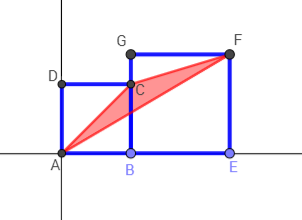Divisibility Rules (OK) – part 1
Many of the posts so far on this blog have been problems to solve. This is more of an article to read, but it still involves some opportunities for thought and action.
Here are some of the divisibility rules I find useful. Others may exist too. Some of these will be familiar to you but I
hope there will be something here that will be new to you and that you can make
some new connections as well. Finally,
it would be good to be able to prove these rules.
(Part 2 will appear at some point and will give some further
thoughts on divisibility rules.)
These are primary school rules:
Divisible by 2: final digit is 0,2,4,6 or 8
Divisible by 10: final digit is 0
Divisible by 5: final digit is 5 or 0
Then there are the rules for 4 and 8:
Divisible by 4: final pair of digits forms a 2-digit number
that is divisible by 4
Divisible by 8: last three digits form a 3-digit number that
is divisible by 8
Hmm. There is a
pattern here.
|
Divisible by …
|
|
|
2
|
Last digit is divisible by 2
|
|
4
|
Number formed by the last two digits is divisible by 4
|
|
8
|
Number formed by the last three digits is divisible by 8
|
I wonder – does this pattern continue? Is a number divisible by 16 if the number
formed by the last four digits is divisible by 16? Is a number divisible by 1024 if the number
formed by the last 10 digits is divisible by 1024?
Next: the rules for 3 and 9:
Divisible by 3: the digital sum (add up the digits) is
divisible by 3
Divisible by 9: the digital sum (add up the digits) is
divisible by 9
These are very useful and help me to see that, for example,
51 is a multiple of 3 (the digital sum is 6).
Why do they work?
Unlucky seven
Apparently there are some divisibility rules for 7. I don’t know them, instead using partitioning
methods. Let’s take the number 4062 and
try to determine whether it is divisible by 7.
35 is divisible by 7, so 3500 can be removed from 4062,
leaving 562. 56 is a multiple of 7, so
we know that the whole thing isn’t a multiple of 7.
Alternatively we can say 4200 is a multiple of 7, but this
is 138 too big (4200 – 4062 = 138). 140
is a multiple of 7, so 138 can’t be and the original number isn’t a multiple of
7.
What about divisibility by 6?
Here I rely on 6 = 2 x 3, so it must be
divisible by 2 and by 3. This is easy,
because the digital sum needs to be a multiple of 3 and it needs to be
even.
This leads to similar ideas for divisibility by 12 (divisible by 4
and by 3), by 15 (divisible by 5 and by 3), 18 (divisible by 9 and 2),
etc.
Finally, 11 is nice because you add up the two sets of
alternate digits. If the difference is a
multiple of 11 (including 0) then the number is a multiple of 11. Why is that?
Eg: 241318. The two
alternate pairs are: 2+1+1 and 4+3+8.
The difference between these is 11, so the whole thing is divisible by
11.




Comments
Post a Comment